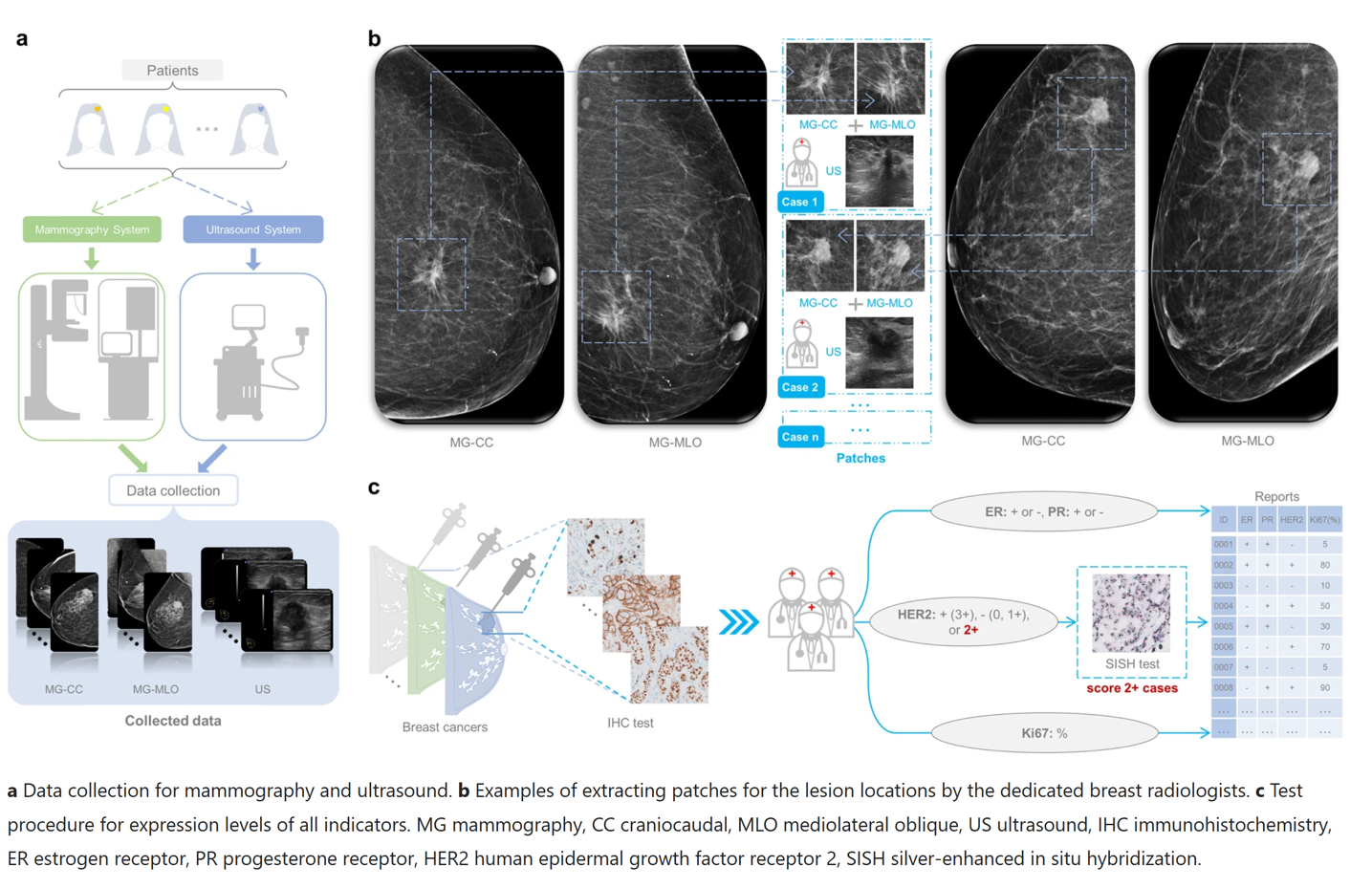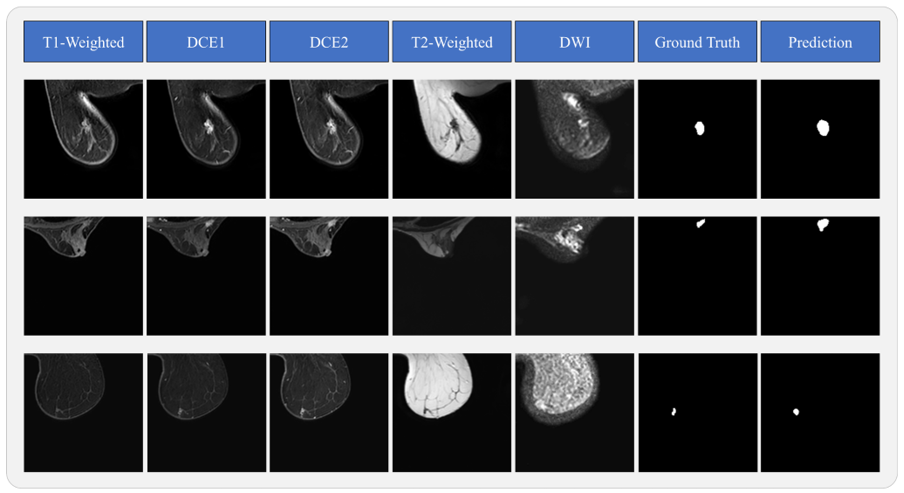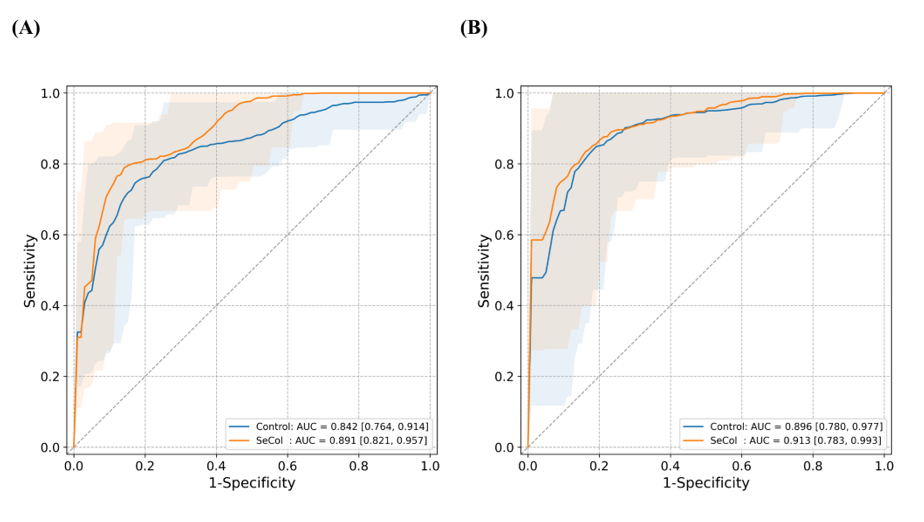Research
Subtypes prediction
Project 1. Predicting breast cancer types on and beyond molecular level in a multi-modal fashion
Accurately determining the molecular subtypes of breast cancer is important for the prognosis of breast cancer patients and can guide treatment selection. In this project, we develop a deep learning-based model for predicting the molecular subtypes of breast cancer directly from the diagnostic mammography and ultrasound images. Multi-modal deep learning with intra- and inter-modality attention modules (MDL-IIA) is proposed to extract important relations between mammography and ultrasound for this task. MDL-IIA leads to the best diagnostic performance compared to other cohort models in predicting 4-category molecular subtypes with Matthews correlation coefficient (MCC) of 0.837 (95% confidence interval [CI]: 0.803, 0.870). The MDL-IIA model can also discriminate between Luminal and Non-Luminal disease with an area under the receiver operating characteristic curve of 0.929 (95% CI: 0.903, 0.951). These results significantly outperform clinicians’ predictions based on radiographic imaging. Beyond molecular-level test, based on gene-level ground truth, our method can bypass the inherent uncertainty from immunohistochemistry test. This work thus provides a noninvasive method to predict the molecular subtypes of breast cancer, potentially guiding treatment selection for breast cancer patients and providing decision support for clinicians.

Project 2. Semi-supervised Co-learning for breast cancer diagnosis using multi-parametric 4D breast MRI
To assess whether the introduction of semi-supervised co-learning in an artificial intelligence model for breast cancer diagnosis using multi-parametric 4D breast MRI improves the model’s performance in lesion segmentation and classification.
The proposed Semi-supervised Co-learning (SeCol) model using unilateral breast as input was used to segment lesions and simultaneously classify breast lesions as benign or malignant. Furthermore, in malignant cases different molecular subtypes (Luminal vs non-Luminal disease) were distinguished.
The visualization results for segmentation using multi-parametric 4D breast MRI:

Performance of the proposed SeCol model. (A) The receiver operating characteristic (ROC) curves for the prediction of malignant lesions. (B) The ROC curves for distinguishing between Luminal disease and non-Luminal disease. SeCol, Semi-supervised Co-learning model:

Semi-supervised learning can potentially reduce dependence on segmentation masks, and semi-supervised co-learning allows multiple tasks to be performed collaboratively and potentially promote each other.
